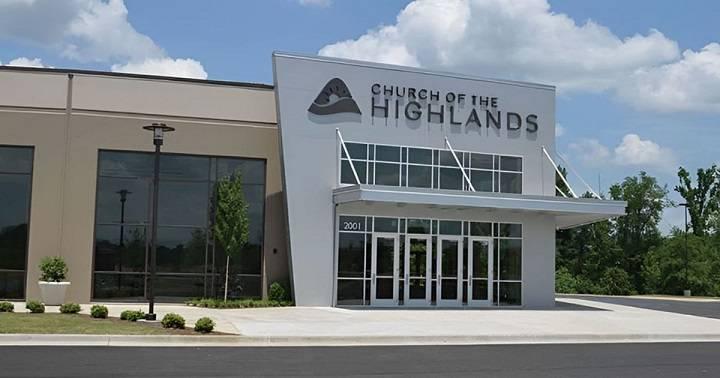Church of the Highlands Exposed: The Truth Behind the Popular Megachurch

Introduction to Church of the Highlands
The Church of the Highlands has become a household name in the world of megachurches. With its vibrant worship services and community outreach programs, it draws thousands every week. However, beneath this facade lies a complex story filled with triumphs and controversies. As members flock to its campuses across Alabama and beyond, questions arise about what truly defines this popular institution. What is the truth behind the church of the highlands exposed? Join us as we delve deep into its history, explore ongoing allegations, and uncover what sets it apart from other megachurches. This journey promises insights that challenge perceptions and invite reflection on faith within modern society.
History and Growth of the Megachurch
The Church of the Highlands began in 2001, founded by Chris Hodges in Birmingham, Alabama. It started with just a handful of attendees meeting in a local school auditorium.
Fast forward to today, and it has transformed into one of the largest megachurches in America. The growth trajectory is remarkable. With multiple campuses across Alabama and thousands attending each week, its influence continues to expand.
Modern technology played a significant role in this evolution. Live streaming services attracted viewers beyond geographical limits. The church’s vibrant community outreach initiatives also fostered deep connections locally.
Hodges’ charismatic leadership and engaging sermons have drawn many seeking spiritual fulfillment. Innovative programs targeting youth and families contributed significantly to its appeal.
As more people search for belonging, the Church of the Highlands positioned itself as a welcoming environment fostering personal growth coupled with strong community ties.
Controversies Surrounding Church of the Highlands
The Church of the Highlands has been at the center of various controversies over the years. Critics argue that its rapid growth often overshadows serious concerns regarding inclusivity and community engagement.
Some former members have voiced their frustrations about the church’s approach to leadership and decision-making, claiming it lacks transparency. This has raised questions among those who expect accountability from such a large organization.
Additionally, social media platforms are rife with discussions about differing opinions on its teachings. People share personal experiences that reveal a divide in how congregants perceive church culture versus actual practice.
These controversies not only affect current members but also influence public perception. They present ongoing challenges for church leaders seeking to maintain trust within their congregation while addressing valid concerns raised by outsiders.
Allegations of Racism and Discrimination
Allegations of racism and discrimination have emerged as significant issues within the Church of the Highlands. Critics argue that the church’s predominantly white leadership does not reflect its diverse congregation. This disparity raises questions about inclusivity.
Some former members have shared experiences suggesting a lack of support for people of color. They report feeling marginalized or overlooked in various church activities and leadership roles. These claims highlight broader concerns about representation within megachurches.
The church’s response to these allegations has varied, with leaders emphasizing unity and diversity in their mission statements. However, skeptics wonder if actions match words when it comes to fostering an inclusive environment.
As discussions continue, many are calling for transparency regarding how the church addresses these serious issues moving forward. The faith community grapples with balancing growth while ensuring everyone feels welcome and valued.
Financial Transparency Concerns
Financial transparency has become a hot-button issue for the Church of the Highlands. Many congregants and outsiders alike have raised questions about where donations end up.
Some members feel uneasy about how funds are allocated. They seek clarity on whether money is spent primarily on community projects or internal operations. This uncertainty can breed mistrust.
Critics point out that megachurches often hold significant financial power, which comes with responsibility. Transparency in finances should be paramount to maintain trust within any religious organization.
When large amounts of money are involved, accountability is essential. The lack of detailed financial reports leaves many wondering if their contributions genuinely benefit the community or line leaders’ pockets instead.
This growing concern calls for open dialogue between church leadership and its congregation, ensuring everyone feels informed and valued in their giving journey.
Response from Church Leaders
Church leaders at the Church of the Highlands have faced significant scrutiny. In response to various accusations, they emphasize their commitment to transparency and community engagement.
They assert that any allegations are taken seriously. Leaders claim they encourage open dialogue among congregants. They believe this fosters a stronger, more inclusive environment.
Moreover, church officials often highlight their outreach programs. These initiatives aim to bridge gaps in understanding within their diverse congregation. By focusing on service, they hope to demonstrate their dedication to unity.
The leadership also addresses financial concerns directly. They share insights into budgeting processes and spending decisions during public forums. Transparency is touted as essential for rebuilding trust with members.
Despite the challenges, Church of the Highlands continues its mission-driven approach while navigating criticism head-on. This response strategy reflects an effort to maintain integrity amid ongoing debates surrounding its practices.
Impact on Members and Local Community
The Church of the Highlands has become a significant player in its local communities. Its large congregation often translates into numerous outreach programs aimed at helping those in need.
Members frequently participate in volunteer initiatives, which foster a sense of belonging and purpose. This engagement creates strong bonds among congregants, enhancing their spiritual journey.
However, this involvement is not without challenges. For some, the megachurch’s rapid growth can feel overwhelming or exclusionary. New members may struggle to integrate into existing groups.
Additionally, critics argue that while community service is prominent, issues like inclusivity and representation within church leadership warrant attention. The impact on marginalized voices remains a concern for many involved with the church.
As these dynamics unfold within the community, they shape how individuals experience faith and fellowship at Church of the Highlands.
Comparison with Other Megachurches
When comparing Church of the Highlands to other megachurches, distinct differences emerge. Each church has its unique flavor and approach to ministry.
For instance, Elevation Church in North Carolina emphasizes contemporary worship styles and music production. This creates a vibrant atmosphere that attracts many young adults seeking connection through modern means.
In contrast, Saddleback Church in California focuses on community service and small group engagement. With an emphasis on personal relationships, they foster deep connections among members.
Church of the Highlands also boasts innovative methods but often leans heavily into large-scale events and high-energy services. The appeal lies in their dynamic preaching style and engaging visuals.
Membership demographics can vary significantly as well. While some churches attract diverse congregations, others tend to maintain homogeneity based on location or doctrine. This distinction shapes not just attendance but overall church culture too.
These comparisons are essential for understanding how different megachurches navigate similar challenges while trying to fulfill their missions.
Moving Forward: What Can Be Done?
To address the issues surrounding the Church of the Highlands, open dialogue is essential. Creating forums where members can voice concerns without fear is a critical first step. Transparency fosters trust and healing.
Encouraging diverse leadership can also bring fresh perspectives to longstanding practices. This change could help redefine church culture in a more inclusive way, aligning it with its stated values.
Additionally, implementing financial audits by external organizations may alleviate worries regarding money management. Clarity in finances builds confidence among congregants.
Community engagement initiatives should be prioritized as well. Actively reaching out to marginalized groups would demonstrate genuine commitment to inclusion and support for those who feel alienated.
Ongoing education on social justice issues within the church can empower members. Knowledge creates awareness that drives positive action both inside and outside of church walls.
Conclusion
The Church of the Highlands has certainly made a significant mark on the landscape of contemporary Christianity. Its rapid growth and engaging worship style have attracted thousands, making it one of America’s most recognized mega church of the highlands exposed, beneath its vibrant exterior lie complexities that challenge its image.
Controversies surrounding racism and discrimination raise questions about inclusivity within its community. The financial transparency issues further complicate the narrative, prompting both supporters and critics to call for accountability from church leaders. Their responses have been varied but show an awareness of these concerns.
For members and those in the local community, this situation creates a dual reality—one where they find spiritual fulfillment while grappling with broader ethical implications. As comparisons arise with other megachurches facing similar trials, it becomes clear that no institution is immune to scrutiny.
Moving forward requires open dialogue among leadership, congregants, and critics alike. There remains potential for genuine reform if all parties are willing to engage earnestly in addressing these pressing issues.
The journey ahead may reshape how we view churches like the Church of the Highlands—blending faith with responsibility in pursuit of a more inclusive spiritual environment.




